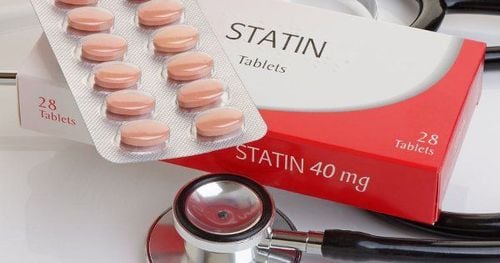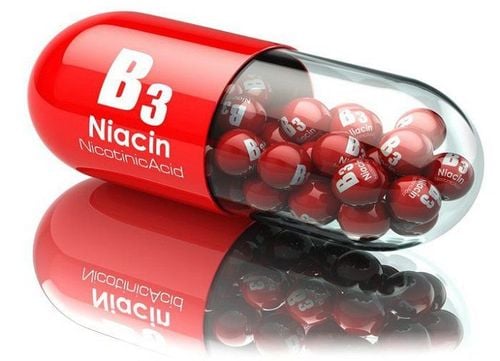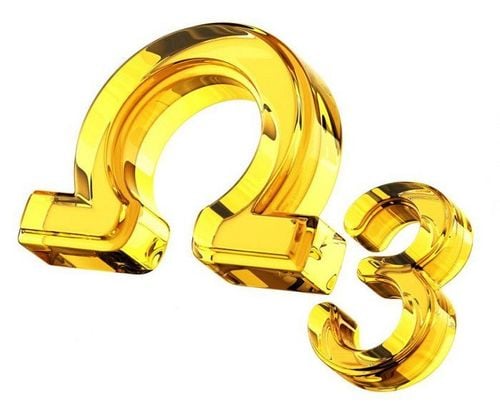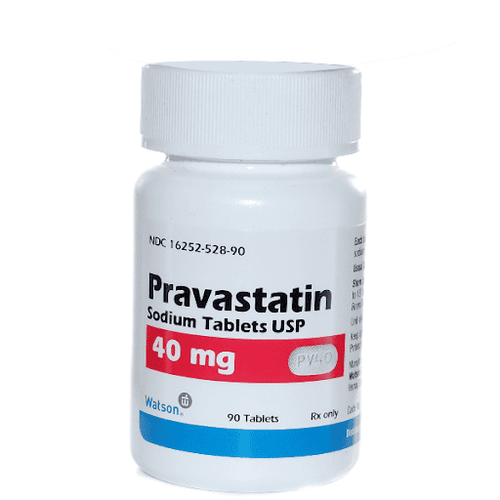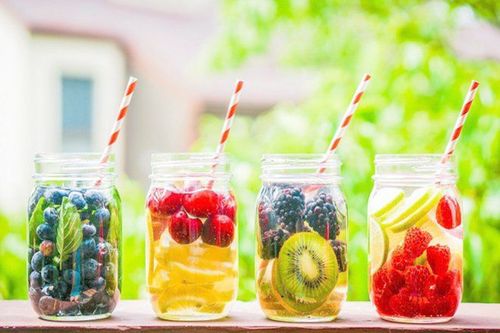This is an automatically translated article.
To build yourself a healthy diet, you need to know the face of unhealthy foods. Surprisingly, foods that should not be eaten can appear in your own refrigerator. The article outlines a list of 10 unhealthy foods that can be in your own refrigerator.
1. Mayonnaise
It's easy to add calories and fat when you love the use of mayonnaise. The truth is that regular mayo isn't so bad with just a teaspoon or two. But most people who use mayo tend to go for more than that. And if you're really a mayonnaise lover, you can get 360 calories and 40 grams of fat in a 1/4-cup serving.
Mayo fanatics have three better options. They may use a lower calorie condiment instead of mayonnaise such as mustard, BBQ sauce, salsa or taco sauce. They can switch to a light mayonnaise with 35 calories and 3.5 grams of fat per tablespoon. Or they can reduce their mayonnaise to a few teaspoons so that it contains only about 60 calories and 6.7 grams of fat.
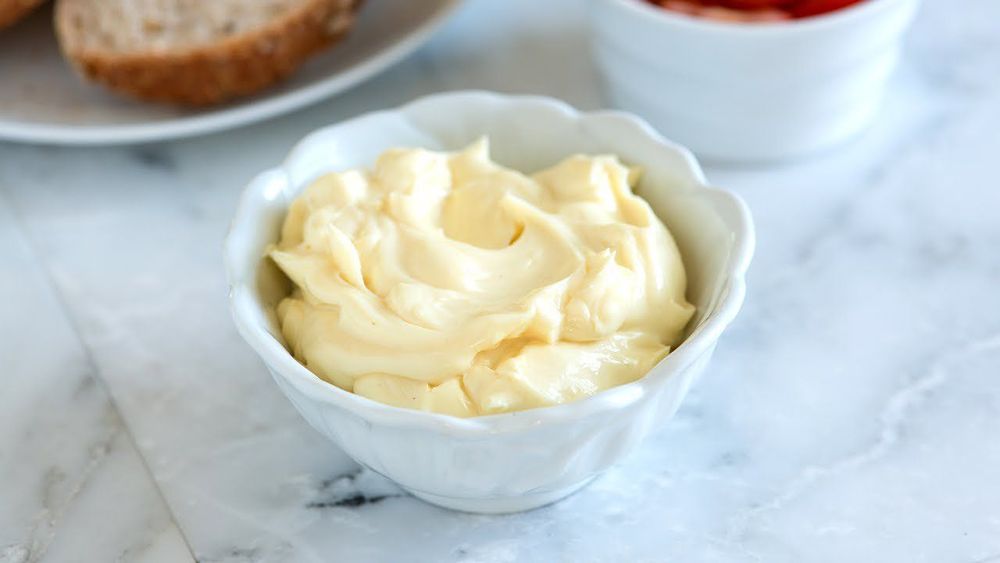
1/4 cốc mayonnaise có 360 calo và 40 gam chất béo trong khẩu phần
2. Soda and other sweet drinks
Sugary drinks are an unhealthy food everywhere. Not only are they common in restaurants and vending machines, but these drinks are also sold in supermarkets as bottled teas, juices, sports drinks and energy drinks. Sodas, sweetened teas and fruit drinks are often nutrient-poor but add a lot of calories. And recent research shows that we don't tend to compensate by eating less when drinking sweetened beverages.
Water is the best drink to rehydrate the body and should make up most of the water we drink every day. Besides, some calorie-free beverages, like green and black tea, not only provide water but also contribute healthy antioxidants. And although skim milk or 1% milk has some calories, milk also has important nutrients, such as calcium, vitamin D, B12, potassium, and magnesium.
3. Alcoholic beverages
From a nutritional point of view, there are definitely better drinks that can be in your fridge besides alcoholic beverages. The calories in alcohol are empty calories because the body cannot use them for energy. The liver is forced to break down alcohol into fatty acids, which then accumulate in the liver. In fact, fat accumulation can be seen in the liver after a night of heavy drinking. Liver cells and brain cells actually die from overexposure to alcohol.
The next problem lies in the calories. A glass of wine (8 ounces) has about 170 calories, and a bottle of beer (12 ounces) has 150 calories. Each 1.5-ounce glass of liquor (gin, rum, vodka, whiskey) has about 105 calories, not including any soft drinks you might drink with it.
If you are going to drink alcohol, drink in moderation. During parties or relaxation hours, instead of alcoholic beverages, consider drinking mineral water or soda with lemon or fresh lemonade, coffee or hot or iced tea, or drinking soft drinks in moderation. right.
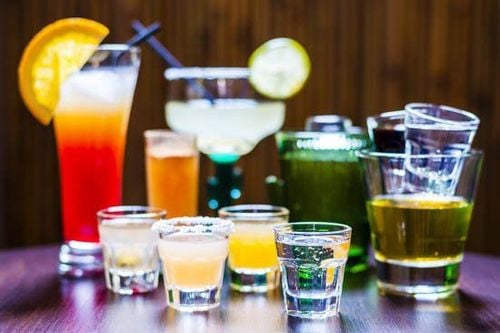
Calo trong rượu là calo rỗng
4. Processed meat
Processed meats, including deli meats, bacon and ham, are on the list of unhealthy foods because they are high in sodium and sometimes fat as well as some preservatives. like nitrite.
Processed meat - defined as any meat preserved by smoking, treating, salting or adding chemical preservatives - is associated with an increased risk of colon cancer. Some experts suspect that certain substances used as preservatives in meat can transform into cancer-causing compounds in the body.
The amount of sodium in a small serving of processed meat ranges from 310 to 480 milligrams. A diet high in sodium is thought to increase the risk of high blood pressure, a major cause of heart disease and stroke.
What to eat instead? You can reduce sodium, preservatives and get instant protein, vitamins and minerals when you choose turkey, chicken or roast beef as an alternative to processed meat. Make your own or look for brands of fast food that are low in nitrates and sodium.
5. Sausage
Also part of the processed meat category, hot dogs are a staple in many homes' refrigerators. People look to them for a quick dinner. Over time, sausage gradually became a typical breakfast or dinner dish.
Sausages are high in sodium (520-680 milligrams per 2-ounce serving) and fat (up to 23 grams total fat and 7 grams saturated fat per serving). They're a no-no and should be replaced by leaner, lower-sodium meats - such as skinless poultry, pork loin and roast beef - and fish and seafood. Even grilled vegetables like portobello mushrooms, eggplant, or roasted red peppers are good alternatives.
But if it must be sausage, consider the lower-fat and nitrate-free options available in most supermarkets, such as turkey kielbasa or soy-based sausage substitutes. They may not be much lower in sodium content, but total saturated fat and total fat are often cut in half.
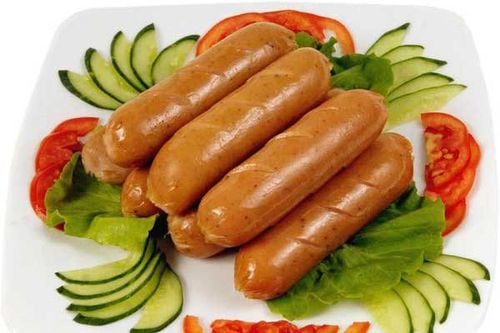
Xúc xích chứa nhiều natri và chất béo
6. Whole milk products
Dairy products are high in protein, calcium, B-12 and riboflavin. But whole dairy products are also high in fat and cholesterol.
Example: If you drink 16 ounces of whole milk per day, you will add 1,904 calories, 105 grams of total fat, 59.5 grams of saturated fat and 315 milligrams of cholesterol over a one-week period.
The good news is that lower-fat options are available for most dairy products, including milk, cheese, yogurt, cottage cheese, and cream cheese.
7. Ice cream
In many American freezers, you'll find a quart of gourmet ice cream or a box of outdated ice cream bars. Even following the recommended 1/2 cup serving on the container can still overload your total daily saturated fat, total fat, and calorie intake.
For example, one serving of Ben & Jerry's chocolate chip cookies has 270 calories, 14 grams of fat, 8 grams of saturated fat, 65 milligrams of cholesterol, and 25 grams of sugar. Half a cup of Haagen-Dazs White Chocolate Raspberry Truffle will give you 310 calories, 18 grams of fat, 10 grams of saturated fat, 105 milligrams of cholesterol and 28 grams of sugar. And a more typical serving for most people is one cup, which doubles total fat, calories, cholesterol, and sugar.
Instead, try some ice cream with less fat, less sugar and fewer calories but still have the same delicious taste you can find in any supermarket. For example, the light version of the brand Safeway Mint Chocolate Chip has 120 calories, 4.5 grams of fat, 3.5 grams of saturated fat, and 14 grams of sugar for a 1/2-cup serving.
For a healthy dessert, enjoy some fresh fruit with plain or fat-free Greek yogurt.

Hãy sử dụng những loại kem có ít chất béo
8. Creamy Salad Sauce
How many bottles of cream sauce are in your fridge? Every two tablespoons of traditional cream sauce adds about 120 calories, 12 grams of fat, 2.5 grams of saturated fat, and 380 milligrams of sodium to your salad. However, the worse truth is that people tend to use twice as much, about 1⁄4 cups.
So try to reduce the size to two tablespoon servings. You can also find some thinner sauces that you like.
9. Margarine
If it can hold its shape in stick form, your margarine may be high in saturated fat. It's the saturated fat that makes the fat more solid at room temperature. In years past, most margarines were the major contributors to unhealthy trans fats, although they have been improved upon.
The use of margarine is often more than you think because its hard texture makes it very difficult to spread butter on foods. And each tablespoon will give you 100 calories and 11 grams of fat. Avocados have 7 grams of saturated fat per tablespoon; Margarine bars have 2 grams of saturated fat and 1.5 to 2.5 grams of trans fat per tablespoon.
Switching to canola or olive oil in cooking and baking when possible is the best option as these oils are rich in mono and polyunsaturated fats. But if you need a fat that's easy to find in recipes, try a reduced-fat margarine that's free of trans fat and low in saturated fat.
If using only butter, use whipped butter instead. It's easier to blend lightly and cut calories, fat, and saturated fat by a third.
10. Frozen French fries
Potato accompaniments such as french fries, french fries or french fries are often preferred for breakfast, lunch and dinner. Many American freezers have a bag of frozen potato products ready to bake in seconds.
Just one small (3-ounce) serving of some popular potato products - such as French fries, or tornado potatoes - contains 8 to 11 grams of total fat, about 3 grams of fat saturated, 390 to 540 milligrams of sodium, and about 160 to 190 calories. And many potato lovers are willing to eat twice this amount in one go.
It's best to eat fresh potatoes, such as baked potatoes or baked red potatoes, as they give you all the nutrients of potatoes without the added fat, saturated fat, or sodium.
If you need frozen fries, steak fries are usually the lowest fat option, but check the label to be sure.
Please dial HOTLINE for more information or register for an appointment HERE. Download MyVinmec app to make appointments faster and to manage your bookings easily.
Reference source: webmd.com





